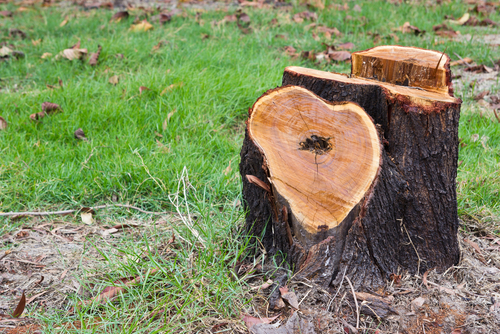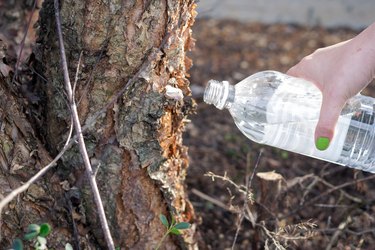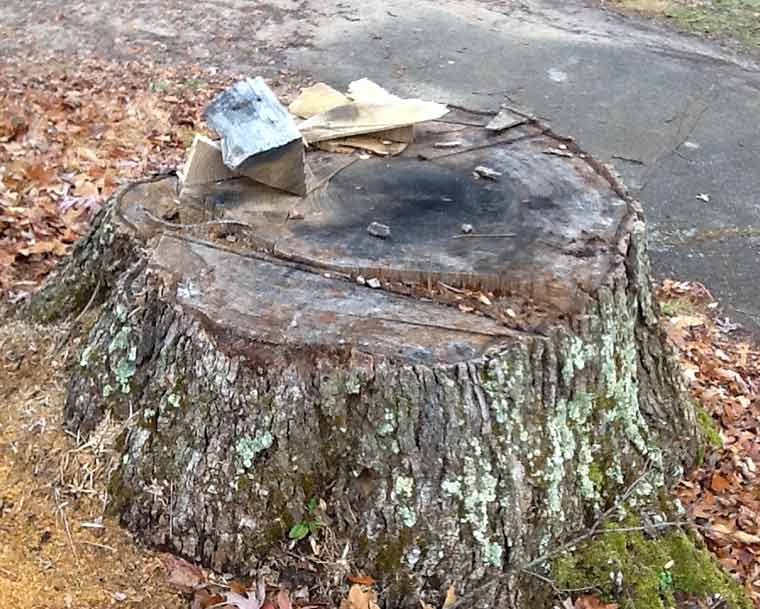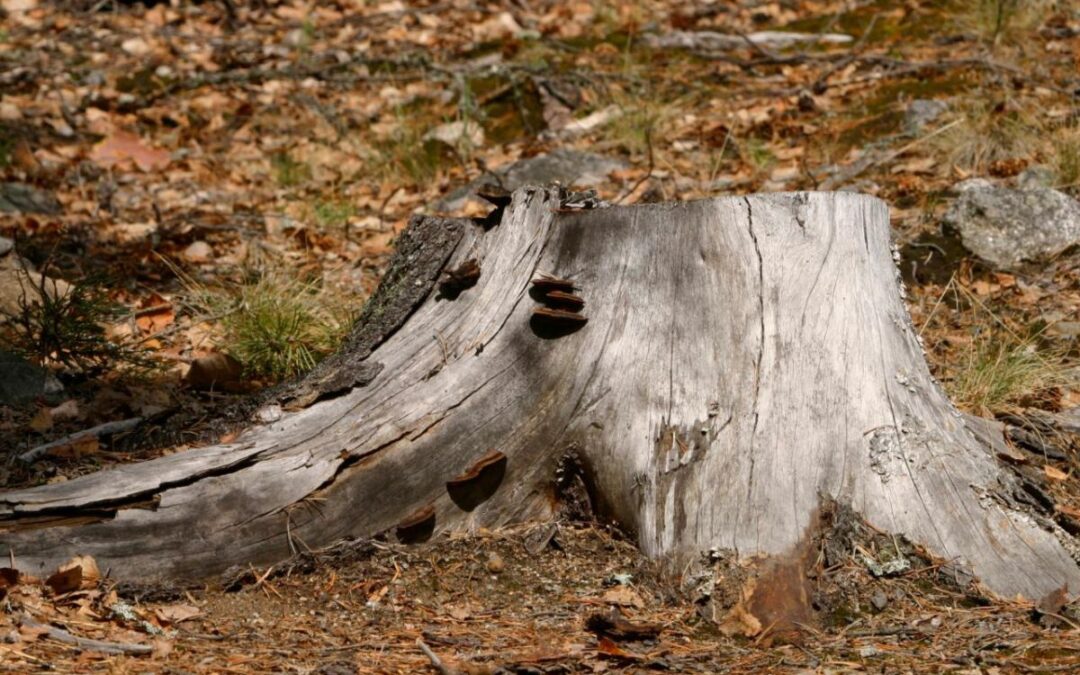If you want to get rid of a tree stump quickly, you can use vinegar. However, there is a danger in using it as it can harm the tree’s roots. To avoid this danger, make sure you follow the instructions carefully. Then, you should use a grinder to grind the stump down more efficiently.
Table of Contents
What can you put on a tree stump to make it rot?
When you want to make a tree stump rot, there are a few options you can use. Potassium nitrate is one option. This chemical can kill the wood, but it’s dangerous so you shouldn’t use it around children or pets. Another option is to put rocks and wet mulch on top of the stump.
If you don’t want to use chemicals, you can use Epsom salts. These are safe for plants, but they will help your tree stump rot faster. To use them, you should mix them with water. The salts will absorb water from the soil and start the chemical reaction.
You can also plant flowers and vegetables on the stump to promote decomposition. However, this method will take longer than using fertilizers or Epsom salt. A gardener’s choice may depend on the area in which the tree stump is located. The plant will help the rotting process if it has a good source of nitrogen.
You can also use a chemical called potassium nitrate. This chemical decomposes the wood, but it takes up to three to four weeks to take effect. If you want to speed up the process, you can repeat the procedure as the stump begins to dry out. After a few weeks, the rotting stump should be gone and you can fill the hole with soil.

How do you rot a tree stump fast?
One of the best ways to rot a tree stump fast is to use vinegar. This natural product contains sulfur and oxygen and will quickly kill tree roots and kill the tree stump. It also has the benefit of drawing moisture from the surrounding soil. For this purpose, you should drill two to three holes into the trunk and pour the solution into the core. Make sure you use a power drill with a 10 Amp capacity so that the solution can reach the core of the stump.
Another method is to fill holes in the stump with Epsom salt. This will fill any holes left by the roots. You may also use salt or wax to plug these holes. However, you should avoid using too much salt because it can be damaging to the topsoil and roots of other plants.
Another method is to use a nitrogen-rich fertilizer. This chemical is similar to Epsom salt and should be mixed with two gallons of water. Once mixed, pour the solution over the stump and surrounding soil. Repeat this procedure as needed.

Will vinegar hurt tree roots?
One of the questions you may have is “Will vinegar rot a tree stump?” There are a couple of options to choose from. White wine vinegar is mild and popular for pickling vegetables, and malt vinegar is more acidic. Both of these options will kill off tree roots, though white wine vinegar is not as effective. Red wine vinegar is made from red wine and is often used to make vinaigrettes. It is not as acidic as white vinegar, which makes it an excellent choice for stump removal.
White vinegar will work to kill tree roots, but it may require several applications to kill all the roots. It is best used in warm and sunny conditions. It is also an excellent weed killer. Just make sure to use the correct amount. You may need to apply several applications, depending on the size of the stump.
Another option is rock salt. Rock salt is commonly used to melt ice in winter, but it also works as a natural root killer. Rock salt contains sodium chloride, which prevents roots from absorbing moisture. The result is an intense drying effect, which eventually kills the tree stump.
What is the fastest way to kill a tree stump?
In two to three months, a tree stump that has been covered in vinegar can begin to decompose. After about a year, the stump will be close to complete decomposition. Another way to speed up the decomposition process is to fill holes in the stump with rock salt. Then, pack soil and mulch on top of the salt-filled holes. Watering over the salt-filled holes will dissolve the salt and help the roots of the tree absorb the solution.
Another quick and cheap way to kill a tree stump is to cover it with rock or Epsom salt. These can be purchased at garden centers or nurseries. Regular table salt can be harmful to the surrounding soil, so make sure to purchase one that is 100 percent pure and contains no added ingredients.
Another method involves pouring Epsom salt into holes drilled into the stump. The depth of the holes should be approximately eight inches. Once the water has dissolved the salt, pour it into the holes. Do this once every week or so until the stump is completely brittle.

How long does it take for a buried stump to rot?
When using a tree stump rot agent, it’s important to know how long it will take to see results. The timeframe will vary depending on the location and soil type. Generally, a stump will take three to seven years to completely decay. However, this timeframe can be longer in some areas. Also, stumps made of soft woods, like pine, will take less time to rot. On the other hand, stumps made of hardwood, like oak or hickory, will take two to three times as long.
If a stump is buried in a warm climate, it can take many years to decay completely. However, it’s possible to remove it before it rots completely. Depending on the species of tree, a stump can lose up to 80 percent of its mass within seven years. Generally, stumps in a warm climate will decay faster than those in cool climates, due to the increased activity of bacteria.
Vinegar is a cheap and widely available solution for rotting tree stumps. To use vinegar, simply pour undiluted white vinegar on the stump. Over time, the vinegar will eat away at the wood and eventually cause the stump to rot. Another common solution for rotting stumps is Epsom salts, which you can buy at any drug store. These salts break down the wood and speed up the rot process.
What is the best stump killer?
There are a few different kinds of tree stump killer available on the market. Some of them accelerate the decomposition of wood, while others target the roots. The Roebic K-77 Root Killer was developed to kill tree roots clogging sewage lines, but it also works well on tree stumps.
Although all chemical-based stump killers are expected to be effective, their efficiency can vary. Another important consideration when choosing a stump killer is how easy it is to use and maintain. A stump killer that is easy to use can bridge the gap between a substandard solution and a quality one.
When choosing a stump killer, you should also take into account the price and the location. A pricier stump killer may be more convenient for a small area where a person can apply it directly, while a less expensive product may be better suited for a large area. In any case, make sure that the product you choose is safe for nearby vegetation.
Some types of stump killers require a large amount of water. This shocks the roots and kills the stump. Once the stump is dead, the natural decomposition process can begin. These methods are faster than home remedies, but they also require more time, tools, and money.

